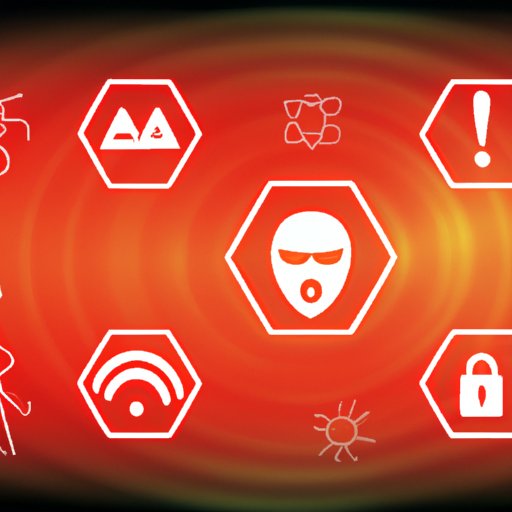Introduction
As technology advances and the world becomes increasingly interconnected, the need for robust cybersecurity measures has become more and more important. Cybersecurity is the practice of protecting systems, networks, and data from malicious attacks and unauthorized access. Despite the best efforts of security professionals and organizations, there is one element that remains a persistent vulnerability: humans. Human errors, lack of understanding, and naivety can all lead to serious security risks and breaches.

Exploring the Human Factor in Cybersecurity
Cyber criminals are constantly looking for ways to exploit humans, whether it’s through social engineering tactics or by taking advantage of user ignorance or naivety. According to a study conducted by IBM Security, “95 percent of all security incidents involve human error,” making humans one of the most significant risk factors in cybersecurity.
Common mistakes that can lead to security breaches include using weak passwords, clicking on suspicious links, or failing to keep software updated. These types of errors can be easily exploited by attackers, allowing them to gain access to sensitive data or systems. In addition, users often fail to recognize the signs of phishing attempts, which can lead to malicious software being installed on their devices.
The Role of Education in Reducing Human Risk
One way to reduce the risk posed by humans is to educate users on safe online practices. This includes teaching users about the dangers of phishing emails, the importance of strong passwords, and the need to update their software regularly. Companies should also provide training on how to identify and respond to potential security threats. By educating users on these topics, organizations can drastically reduce the risk of human error-related security breaches.
In addition to educating users on safe online practices, organizations should also consider why people are willing to take risks online. Many users are unaware of the potential consequences of their actions, or may simply not understand the gravity of the situation. As such, it is important to educate users on the risks associated with their online behavior and the potential consequences of their actions.
Understanding Social Engineering Tactics
Social engineering is a type of attack where hackers use psychological manipulation to gain access to sensitive information. These attacks typically involve manipulating users into divulging confidential information, such as passwords or credit card numbers. By exploiting human weaknesses, such as curiosity or naivety, hackers can easily gain access to sensitive systems and data.
Organizations should be aware of the techniques used by hackers and should educate users on how to identify and respond to potential social engineering attacks. This can help users spot suspicious activity and protect themselves from becoming victims of these attacks.

The Impact of Technology on Human Security
Technology can both help and hurt cybersecurity efforts. On one hand, new technologies can provide improved protection against cyber threats. For example, artificial intelligence (AI) can be used to detect and respond to malicious activities. On the other hand, new technologies can also create new vulnerabilities. For example, the increasing use of cloud computing has made it easier for attackers to gain access to sensitive data.
Organizations should consider the impact of new technologies on their security posture and take steps to ensure that their systems are properly protected. This includes implementing proper authentication protocols, deploying firewalls, and regularly updating software.
Conclusion
Humans remain the weakest link in cybersecurity, due to their susceptibility to mistakes and manipulation. Organizations must take steps to educate users on safe online practices and to protect against social engineering tactics. Technology can both help and hurt cybersecurity efforts, so organizations should consider the impact of new technologies on their security posture. By addressing the human factor in cybersecurity, organizations can reduce the risk of cyberattacks and protect their systems and data.
(Note: Is this article not meeting your expectations? Do you have knowledge or insights to share? Unlock new opportunities and expand your reach by joining our authors team. Click Registration to join us and share your expertise with our readers.)
